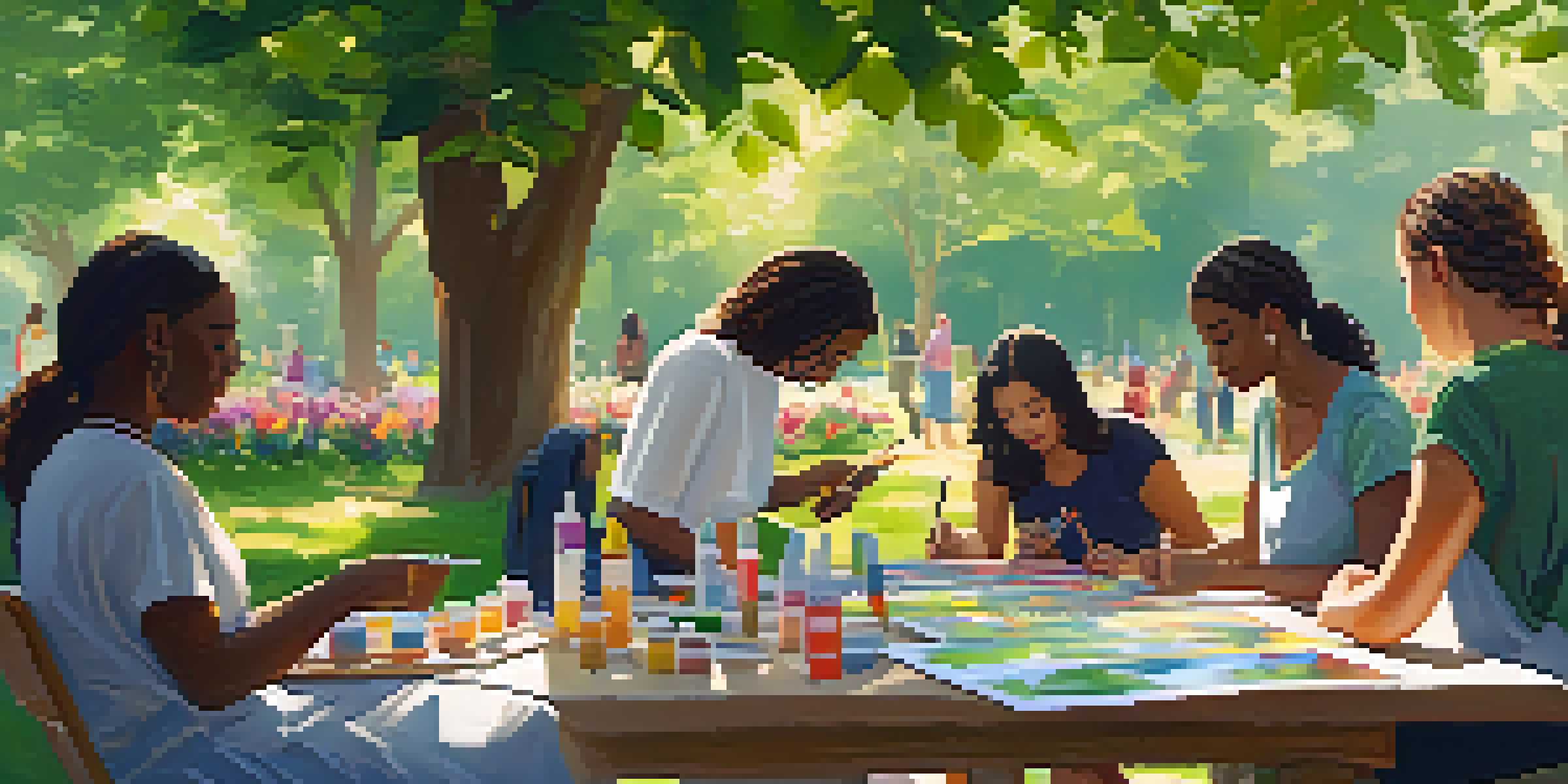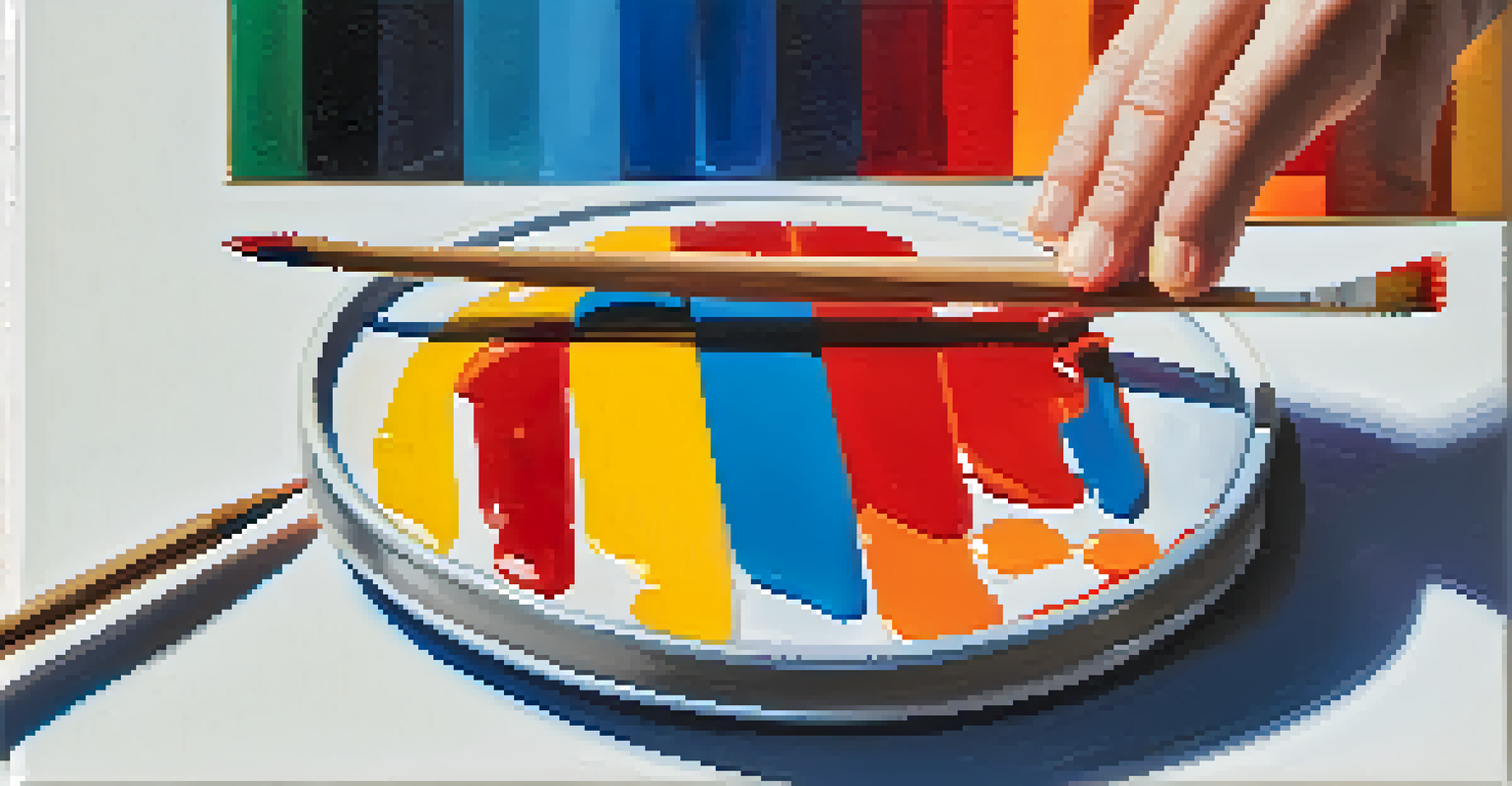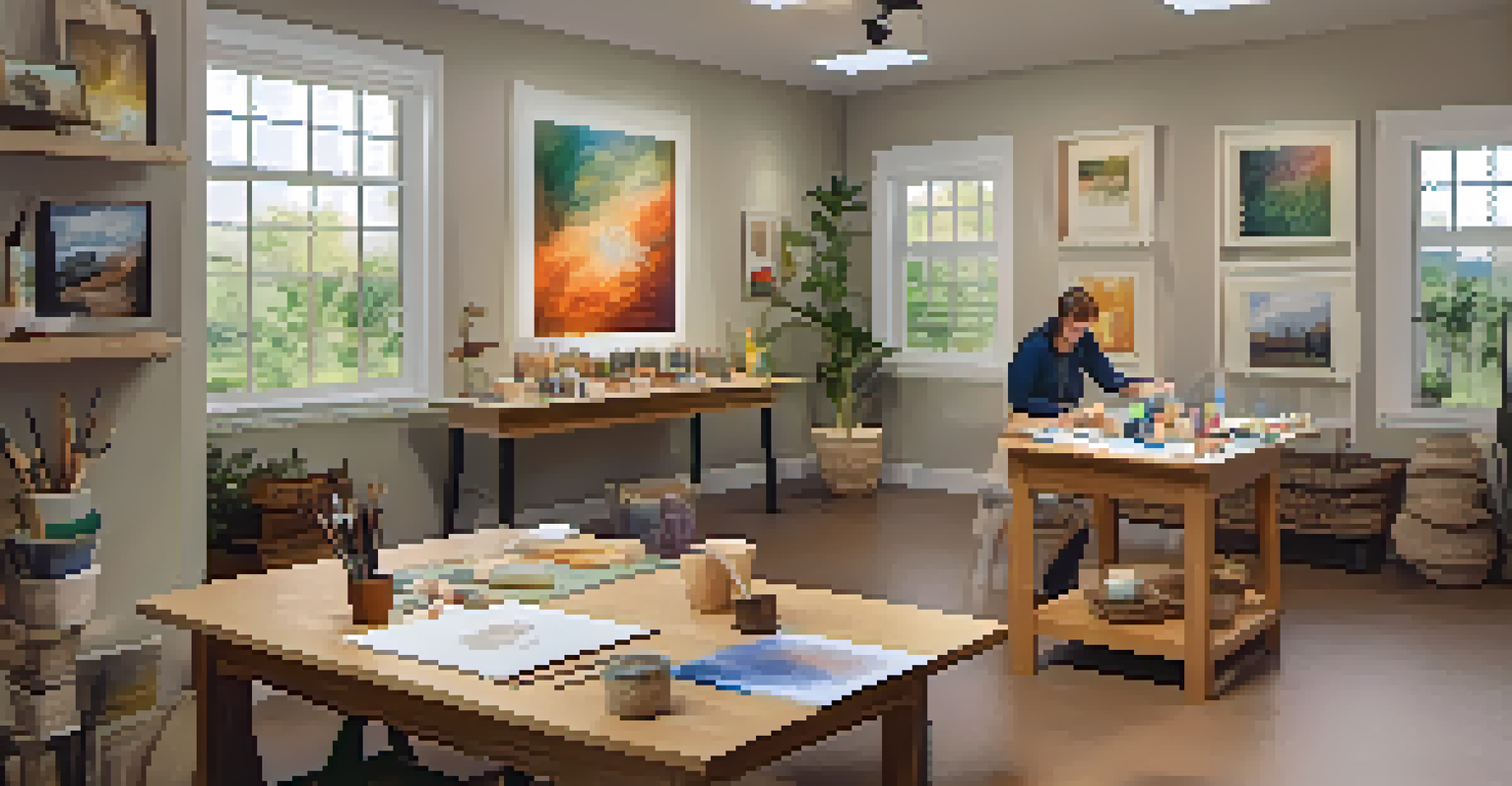The Healing Power of Art: Memory Recovery Through Creativity

Understanding Memory Recovery in Healing Processes
Memory recovery is a crucial aspect of healing, particularly for those who have experienced trauma or significant life changes. It involves not just recalling past events but also reconstructing one’s identity and sense of self. This process can be daunting, as memories can be fragmented or painful, making it essential to find supportive methods to facilitate healing.
Art enables us to find ourselves and lose ourselves at the same time.
Art, in its many forms, can serve as a powerful tool for memory recovery. Whether through painting, music, or writing, creative expression allows individuals to explore their thoughts and feelings in a safe environment. This exploration can help bridge the gap between lost memories and present realities, offering a pathway to healing that feels both natural and profound.
Incorporating creativity into recovery doesn’t just help recall memories; it can also foster connections with others. Group art therapy sessions, for example, create a space where individuals can share their experiences and support one another. This sense of community is invaluable, as it reminds us that we are not alone in our struggles, promoting a holistic approach to healing.
The Role of Art Therapy in Memory Recovery
Art therapy is a structured approach that harnesses the creative process to provide therapeutic benefits. Through guided activities, individuals can express emotions that may be difficult to articulate verbally. This non-verbal communication can be especially helpful in memory recovery, where words may fail but colors, shapes, and sounds can communicate complex feelings.

Therapists often use various mediums—like clay, paint, or music—to help clients unlock their memories. For instance, someone might sculpt a figure that represents a pivotal moment from their past, facilitating deeper reflection and insight. This hands-on approach can make abstract memories more tangible, allowing individuals to process their experiences in a more meaningful way.
Art Aids Memory Recovery
Creative expression through art provides a safe space for individuals to explore and reconstruct their memories, facilitating emotional healing.
Additionally, art therapy can help reduce anxiety and depression, common barriers to effective memory recovery. By focusing on the creative process rather than the final product, individuals can find solace and joy in their work. This shift in focus encourages a healthier mindset, making it easier to confront and heal from painful memories.
Creativity as a Gateway to Self-Discovery
Engaging in creative activities often leads to self-discovery, allowing individuals to explore their identities beyond their memories. For many, creating art can reveal hidden truths about oneself, illuminating aspects of personality and experience that may have been overshadowed by trauma. This introspection is crucial for rebuilding self-esteem and confidence during the recovery process.
The creation of something new is not accomplished by the intellect but by the play instinct acting from inner necessity.
For example, a person might start painting to express their feelings about a traumatic event. As they paint, they may discover new perspectives on their experience, leading to insights about their resilience and strength. This newfound understanding can be empowering, helping individuals move forward with a clearer sense of purpose.
Moreover, the act of creating can serve as a form of meditation, providing a mental break from the chaos of recovery. By immersing themselves in creativity, individuals can find peace and clarity, facilitating a deeper connection with their emotions and memories. This connection is vital, as it creates a foundation for further healing.
The Impact of Art on Emotional Well-Being
Art has a unique ability to evoke emotions, making it a powerful medium for exploring feelings that may be tied to memory recovery. For many, creating or experiencing art can trigger memories and emotions that have been suppressed, allowing for a cathartic release. This emotional exploration is an essential step in the healing journey.
Consider how listening to a song can transport you back to a specific moment in time. Similarly, engaging with art can open doors to memories, both joyful and painful. This process can be incredibly therapeutic, as it allows individuals to confront their feelings in a safe and constructive way, ultimately leading to emotional healing.
Community Support Through Art
Group art therapy fosters connections among participants, reminding them that they are not alone in their healing journeys.
Additionally, sharing art with others can foster connections and reduce feelings of isolation. When individuals express their emotions through art, they often find that others resonate with their experiences. This shared understanding can be profoundly comforting, reinforcing the idea that healing is a collective journey.
Case Studies: Real-Life Examples of Art Healing
Numerous case studies demonstrate the efficacy of art in memory recovery. One notable example is a group of veterans who participated in art therapy sessions to address PTSD. Through painting and storytelling, many were able to process traumatic experiences, significantly improving their mental health and overall quality of life.
Another inspiring case involves individuals recovering from strokes or neurological conditions. Art therapy not only helps them regain fine motor skills but also aids in memory recovery. Engaging in creative activities can stimulate brain function, encouraging neural connections that are vital for recalling memories.
These real-life examples illustrate that the healing power of art transcends mere expression; it can lead to tangible improvements in memory recovery. They remind us that no matter our circumstances, creativity can be a beacon of hope and a pathway to healing.
Practical Ways to Integrate Art into Recovery
Incorporating art into your recovery journey doesn’t have to be complicated or time-consuming. Simple activities like doodling, journaling, or coloring can provide an outlet for expression. Setting aside just a few minutes each day to engage with art can make a significant difference in your emotional well-being and memory recovery process.
Consider joining a local art class or workshop to explore new mediums and techniques. This not only helps you learn but also creates opportunities to connect with others on a similar journey. Group settings can enhance the therapeutic effects of art, as sharing experiences and insights fosters a sense of community.
Art Enhances Emotional Well-Being
Engaging with art can trigger cathartic emotional releases and promote a sense of shared understanding, essential for the healing process.
Lastly, don’t forget the power of nature in art. Engaging in outdoor activities like nature journaling or photography can spark creativity while promoting mindfulness. This connection to nature can be incredibly grounding, providing a serene backdrop for your healing journey.
The Future of Art in Healing and Memory Recovery
As we continue to explore the connection between art and healing, the future looks bright for integrating creativity into memory recovery. Research is ongoing, uncovering more about how artistic expression can impact mental health and cognitive function. These findings will undoubtedly shape therapeutic practices moving forward.
Moreover, the rise of digital art forms opens up new avenues for creativity in healing. Virtual reality art experiences, for example, can provide immersive environments that enhance emotional expression and memory recall. As technology evolves, so too will the ways in which we engage with art for healing purposes.

Ultimately, the healing power of art is a testament to human resilience and creativity. By embracing art as a vital component of recovery, we can foster deeper connections with ourselves and others, paving the way for a brighter, healthier future.